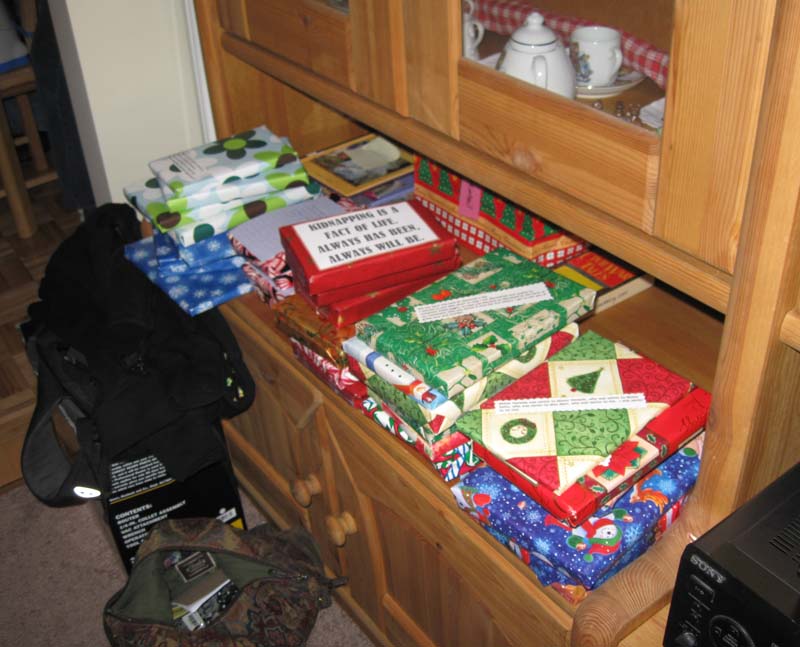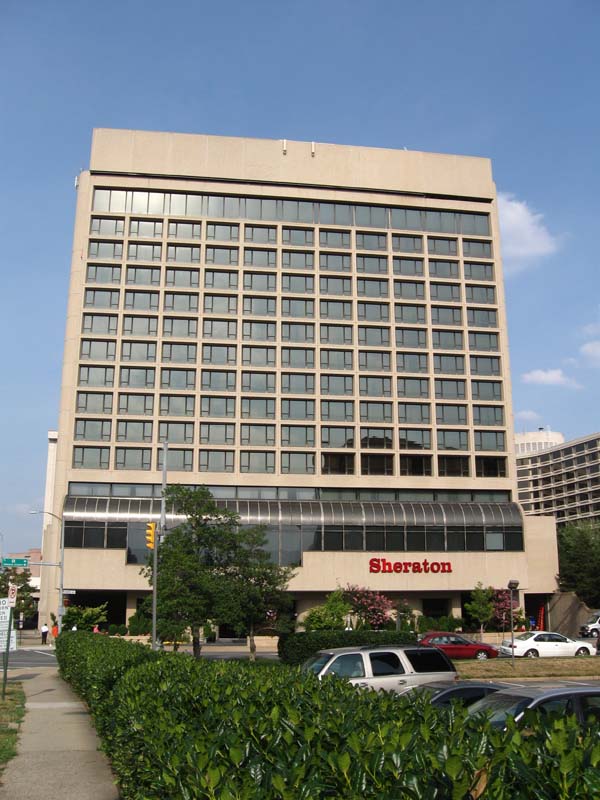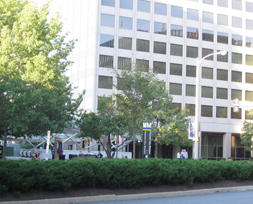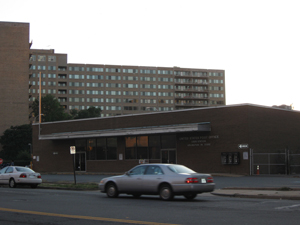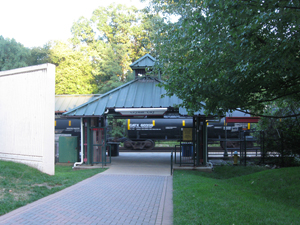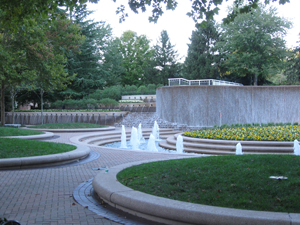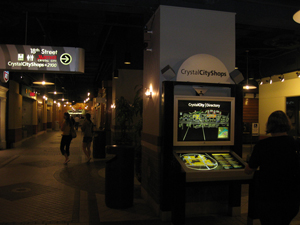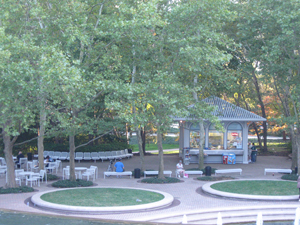Archive for the ‘adventure’ Category
Adventures with Markeroni
This post is part 16 of our Wednesday Adventure Series. Each week we will highlight something different in the Washington, D.C., Metro Area, many of which will be options for part of your own BookCrossing Journey. With so many things to see and do, how will you choose?
Have you ever stopped to read a historical marker, or wanted to know more about an interesting old building? If so, the Markeroni site is for you.
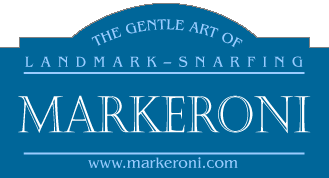
Markeroni is a friendly, informal and light-hearted online community where history fans, treasure hunters, and travelers log their visits to historical markers and historic landmarks. All you technically need is yourself and access to the internet, but most members also bring a camera and notebook to document their visit. GPS coordinates for many markers are also available on the site. Currently the Markeroni database only covers the USA, Canada, British Isles, Ireland, Australia, and New Zealand. A worldwide database is in progress.
 Markeroni was founded on August 13th, 2003 by BookCrosser WhiteRaven13, who says the idea of Markeroni began as a month-long solo motorcycle tour of historical markers in California. The trip was canceled due to mechanical problems, but she decided to share her interest with the world, providing a site to help others find historical markers, “which seemed to move around at night.” Her travel memoir, A Little Twist of Texas, documents her adventures traveling to the 2005 BookCrossing Convention in Fort Worth, Texas, combining her loves of Markeroni, motorcycles, and BookCrossing. She even has Markeroni-themed BookCrossing Labels and hosts an annual history release challenge.
Markeroni was founded on August 13th, 2003 by BookCrosser WhiteRaven13, who says the idea of Markeroni began as a month-long solo motorcycle tour of historical markers in California. The trip was canceled due to mechanical problems, but she decided to share her interest with the world, providing a site to help others find historical markers, “which seemed to move around at night.” Her travel memoir, A Little Twist of Texas, documents her adventures traveling to the 2005 BookCrossing Convention in Fort Worth, Texas, combining her loves of Markeroni, motorcycles, and BookCrossing. She even has Markeroni-themed BookCrossing Labels and hosts an annual history release challenge.
Some examples of books released at snarfs (click for the journal entries & larger photos):
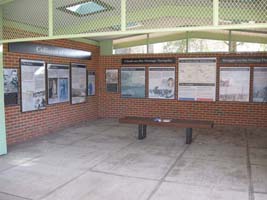
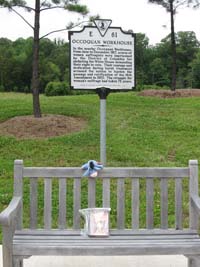
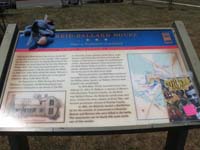
Like many hobbies, Markeroni comes with a lingo all its own. Snarf is a slightly complicated term, referring to both the actual visit to a historical landmark, and the act of hunting for them. (If you aren’t fond of the term “snarf”, it’s perfectly okay to call it “landmark hunting”.) A snarfari is any excursion made for the specific purpose of snarfing. Members of Markeroni are called Markeroons. Many Markeroons bring a mascot, often a plush toy, to “pose†with the markers in snarf photographs. Kudos are colored stars next to a member’s name to indicate how many landmarks they’ve logged. In short, if you’re going on snarfari with your fellow Markeroons to increase your kudos, don’t forget your mascot!
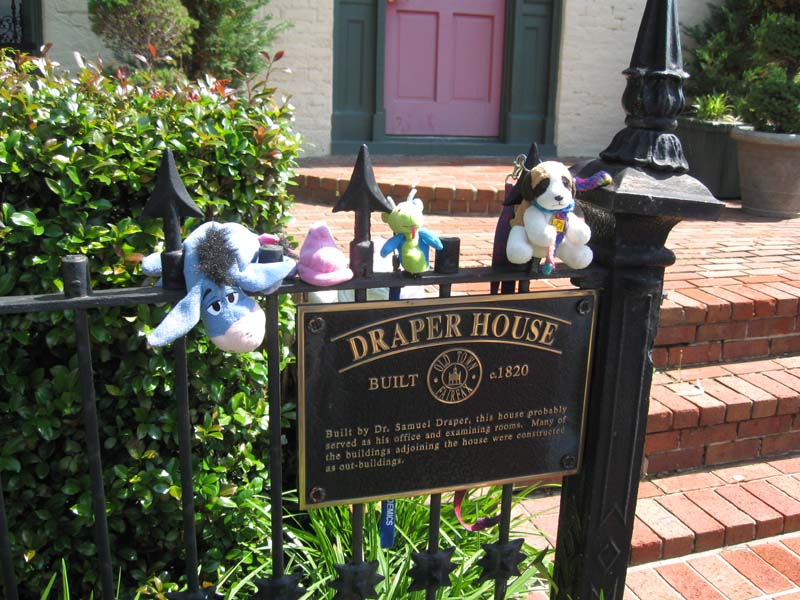
In order for a landmark to count as a snarf on Markeroni, it must fall into one of the following categories:
* Any signs, plaques or markers that give information about history (or, sometimes, natural history)
* Monuments and statues so long as they depict a figure in history (i.e., not art and not religious icons)
* Memorial plaques so long as they give more information about the person than just their name and dates
* Landmarks that have been designated (given some kind of legal protection) at the national, regional or town level
* War memorials
* Museums–but you have to actually go inside and visit the museum before you can log it!
Participation in the site is completely free, but you can gain additional features with a premium membership, including the ability to “direct log” a marker not already in the system (as opposed to requesting it, waiting for it to be added, then logging your visit). After covering about half its operating costs, 10% of Markeroni’s proceeds go toward historical preservation.
A downtown Washington snarfari is one of your activity options for Friday morning (early bird) and Saturday afternoon. For those who don’t wish to snarf, the activity is doubling as a release walk. This short journey is being led by active Markeroon and BookCrosser melydia, who is attempting to bribe people into signing up by giving everyone who joins the snarfari a free mascot. (But we’ll let you in on a little secret: she’s such a softie she’ll probably give you one even if you choose a different activity for Saturday.) We’ll also have a Markeroni starter package as one of the raffle prizes you can enter to win at the convention, which will give you a great start in this hobby.
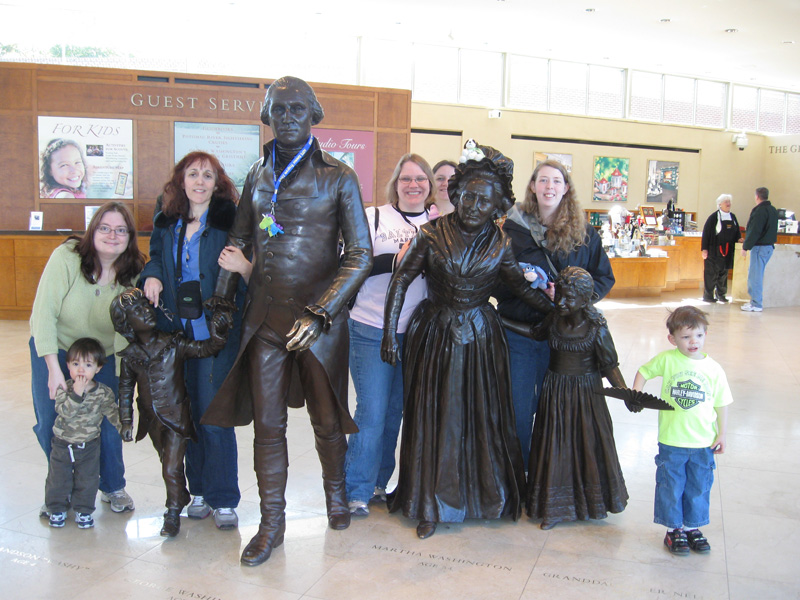
Adventures in Chancellorsville
This post is part 15 of our Wednesday Adventure Series. Each week we will highlight something different in the Washington, D.C., Metro Area, many of which will be options for part of your own BookCrossing Journey. With so many things to see and do, how will you choose?
The area surrounding Washington, D.C., was a tumultuous place during the American Civil War, as the Union capitol was located right on the border of the Confederacy. The Battle of Chancellorsville, just one of the major conflicts in the area, took place what is now about an hour’s drive from Washington.
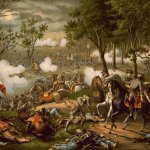 In late April, 1863, Union (Northern) General Joseph Hooker and his troops crossed the Rappahannock River in two places, planning to attack the Confederate (Southern) position from both sides. Hooker fully expected his enemies to retreat in the face of his nearly 115,000 Union soldiers advancing. Though heavily outnumbered with just under 60,000 troops, General Robert E. Lee led his Confederate forces to confront Hooker’s troops. After splitting off two groups under Generals Jubal Early and Thomas J. “Stonewall” Jackson, respectively, Lee marched on Chancellorsville, Virginia, where Hooker had halted his advance to await additional troops.
In late April, 1863, Union (Northern) General Joseph Hooker and his troops crossed the Rappahannock River in two places, planning to attack the Confederate (Southern) position from both sides. Hooker fully expected his enemies to retreat in the face of his nearly 115,000 Union soldiers advancing. Though heavily outnumbered with just under 60,000 troops, General Robert E. Lee led his Confederate forces to confront Hooker’s troops. After splitting off two groups under Generals Jubal Early and Thomas J. “Stonewall” Jackson, respectively, Lee marched on Chancellorsville, Virginia, where Hooker had halted his advance to await additional troops.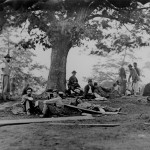
After a skirmish with Jackson’s troops, Hooker fell back into a defensive position at Chancellorsville, losing any offensive advantage he may have had. Through a number of maneuvers intended to lure Hooker into believing the Confederates were in retreat, Lee and his forces attacked the Union soldiers from multiple directions.
The fighting lasted nearly a week, resulting in the deaths of about 24,000 men, including General Jackson. Though there were almost twice as many Union troops as Confederates involved in this battle, the Confederates eventually won the Battle of Chancellorsville, driving Hooker back north across the Rappahannock River in defeat.
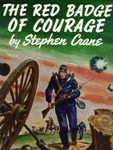 If this all sounds a bit familiar, you’ve probably read The Red Badge of Courage by Stephen Crane. Though the battle in the novel is not named, it parallels the Battle of Chancellorsville. Needless to say, it makes a great themed release. Likewise with Gods and Generals by Jeff Shaara, a novel which covers much of the American Civil War prior to the Battle at Gettysburg.
If this all sounds a bit familiar, you’ve probably read The Red Badge of Courage by Stephen Crane. Though the battle in the novel is not named, it parallels the Battle of Chancellorsville. Needless to say, it makes a great themed release. Likewise with Gods and Generals by Jeff Shaara, a novel which covers much of the American Civil War prior to the Battle at Gettysburg.
One of the options you can choose from for the Sunday of the BookCrossing Convention is a tour of this battlefield led by BookCrosser and local historian nat4lee. If you would like to join us there, please sign up on the add-ons page. Can’t make it? Check out the National Park Service’s virtual tour of the area.
Adventures at the Capitol
This post is part 14 of our Wednesday Adventure Series. Each week we will highlight something different in the Washington, D.C., Metro Area, many of which will be options for part of your own BookCrossing Journey. With so many things to see and do, how will you choose?
REMINDER: There are just a few days left to take advantage of the current special deals. So buy a shirt today and be entered to win!
On the eastern end of the National Mall, opposite the Washington Monument, stands Capitol Hill. Atop the hill stands one of Washington, D.C.’s most iconic landmarks: the Capitol Building. An inlaid star on the floor inside marks the spot from which the quadrants that make up the District of Columbia originate. Both parts of Congress—the Senate and the House of Representatives—meet and work in the Capitol building, but it also houses a large collection of American artwork and is an architectural beauty. This symmetrical building with its cupola is the model for 33 (more than half) state capitol buildings in the United States of America.
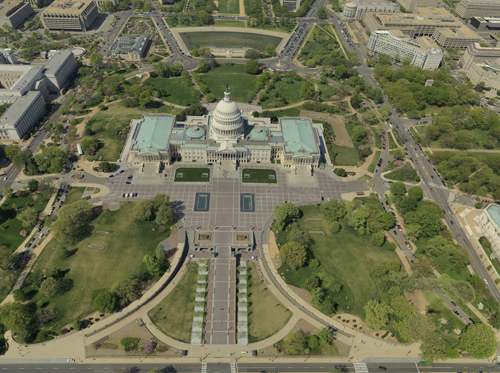
However, the Capitol we know and recognize today did not always look like this. It was Thomas Jefferson’s idea to call the building the “Capitol,†rather than “Congress House.†And after Pierre Charles L’Enfant, who had been given the task of designing the Capitol as well as the city plan of Washington, D.C., was dismissed, Thomas Jefferson created a design competition for the building in 1792. The contest was supposed to run for four months and the prizes of $500 and a lot in the federal city drew more than ten entries, almost all of which were apparently amateurish and similar to the simple, unfinished architecture found throughout the U.S. in the late 1700s. The design finally accepted by George Washington, with Jefferson’s approval, was a late entry by architect William Thornton. L’Enfant’s draftsman, Etienne Sulpiece (Stephen) Hallet, submitted his own design to the contest, but his work was dismissed as being too fanciful, too expensive, and too French. Nonetheless, he worked as Thornton’s supervisor in the building of the Capitol until he tried repeatedly to change the winning designs to look more like his own; he was fired from the project after a year. Construction began and George Washington himself laid the cornerstone on September 18, 1793. Throughout the process and during the decades to come, the design was modified from the original by many other men—Hoban, Latrobe, Bulfinch, Walter, Schoenborn, and others.
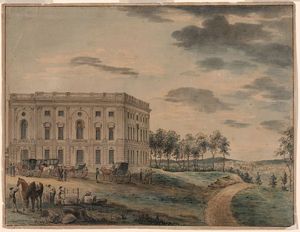 George Hadfield, hired as superintendent of construction, resigned in 1798 after three years on the project because he was satisfied with neither the plans nor the quality of the construction. The Senate wing was completed in 1800 and the first session of the United States Congress was held in the building on November 17, 1800. However, the House of Representatives moved into the House wing in 1807 when the building was still incomplete; the House wing wasn’t completed until 1811.
George Hadfield, hired as superintendent of construction, resigned in 1798 after three years on the project because he was satisfied with neither the plans nor the quality of the construction. The Senate wing was completed in 1800 and the first session of the United States Congress was held in the building on November 17, 1800. However, the House of Representatives moved into the House wing in 1807 when the building was still incomplete; the House wing wasn’t completed until 1811.
Just a few years later, part of the Capitol was burned by British troops during the War of 1812; a rainstorm kept the entire building from burning down. Reconstruction of the damaged section was not completed until 1819 and new construction continued until 1826, including the Rotunda and the building’s first dome, an architectural feature it is difficult to imagine the building without. In the 1850s, the building was expanded again; most of the work was done by African Americans—free men and slaves both. Additions included an exterior structure, a tholos, and the statue of Freedom, which was added to the top of the dome in 1863. When the East Front of the building was rebuilt in 1904, the Corinthian columns were removed and taken to a large meadow at the National Arboretum, where you can still see them standing alone today.
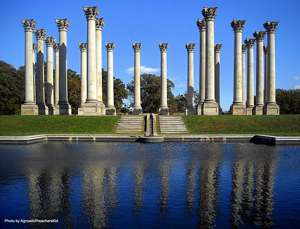
Though the building is the seat of the United State’s legislative branch, the executive branch uses the building as well. The East Front is where most presidential inaugurations took place, however the ceremony has taken place at the West Front since 1981. Several ceremonies have been moved indoors due to cold weather, and several wars caused inaugurations to be held at different locations in Washington, D.C. Since Woodrow Wilson’s presidency, the president’s annual State of the Union address has been held in the Capitol building because it is an address to the Congress.
Up to four U.S. flags officially fly over the Capitol. There is one flagpole on either side (East and West) of the base of the dome, where flags have flown day and night since World War 1. The other two flagpoles are at other sides of the building (North and South) and are flown only when the Senate or House of Representatives chamber below them is in session. Since 1937, people can purchase flags flown over the Capitol, and to meet the high demand for flags (more than 100,000 requests every year) there are some extra flagpoles on the roof not visible from the ground.
The inside of the Capitol is just as beautiful as the outside. Be sure to look around at the many murals depicting great aspects of America. There is everything from depictions of figures such as Benjamin Franklin to events such as the moon landing. Other subjects include native animals, insects, and plants, the landing of Christopher Columbus, the Declaration of Independence, the Wright Brothers’s flight in Kitty Hawk, and the Challenger space shuttle crew.
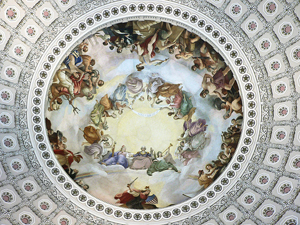 Beneath the top of the dome is Constantino Brumidi’s painting, The Apotheosis of Washington, thought to be the first attempt by the United States to deify a founding father (depicting Washington amongst a host of Greek and Roman gods and goddesses). This is fitting because the area beneath the Rotunda was designed to look down into George Washington’s tomb. The area is still known as the Crypt; however, George Washington wished to be buried at his home, Mount Vernon, so the space now houses exhibits about the history of the building. Eleven presidents have lain in state in the Rotunda for public viewing, their coffins supported by the catafalque that was meant for Washington’s tomb. Other important Americans who have lain in state there include Officers John Gibson and Jacob Chestnut (the first African American to receive the honor), who were killed in the 1998 shooting in the Capitol, and Rosa Parks (the first woman and second African American to receive the honor).
Beneath the top of the dome is Constantino Brumidi’s painting, The Apotheosis of Washington, thought to be the first attempt by the United States to deify a founding father (depicting Washington amongst a host of Greek and Roman gods and goddesses). This is fitting because the area beneath the Rotunda was designed to look down into George Washington’s tomb. The area is still known as the Crypt; however, George Washington wished to be buried at his home, Mount Vernon, so the space now houses exhibits about the history of the building. Eleven presidents have lain in state in the Rotunda for public viewing, their coffins supported by the catafalque that was meant for Washington’s tomb. Other important Americans who have lain in state there include Officers John Gibson and Jacob Chestnut (the first African American to receive the honor), who were killed in the 1998 shooting in the Capitol, and Rosa Parks (the first woman and second African American to receive the honor).
In addition to the Crypt below, the basement of the Capitol sports some interesting artifacts: two marble bathtubs. Now in a utility room, these tubs are from the original, elaborate Senate baths (a sort of spa for members of Congress and their guests) which consisted of baths, a barbershop, and a massage parlor.
Another significant mix of art and history on display in the Capitol is the National Statuary Hall Collection. This features two statues donated by each of the fifty states. These statues are of significant people in the states’ histories, but not all are on display at any given time so you never know for sure which you will see during a visit. One of the Hawaii statues, the statue of King Kamehameha, was so heavy it was feared the floor might give way beneath it, so it was moved to Emancipation Hall in the new visitor center. The last statue in the collection, added in 2005 from New Mexico, was actually the first statue to be moved to the visitor center.
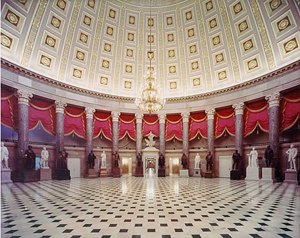
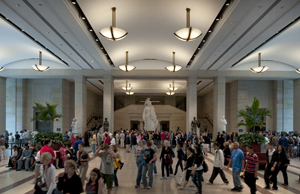
The Capitol Visitor Center (CVC) opened in late 2008. This handicap-accessible, three-level facility sports a theater, exhibit rooms, dining facilities and an underground service tunnel. The CVC is nearly three-quarters of the size of the Capitol, but you won’t be able to see the Visitor Center from outside: it is located entirely underneath the east wing. It is a much better way to begin your visit to this historic building; before you were forced to line up in the parking lot (not particularly enjoyable during bad weather) and enter through a narrow staircase and entrance.
The Capitol Grounds are roughly 274 acres, which is a significant amount to set aside within a bustling city like Washington, D.C., where new attractions and offices are constantly being built. There are grand lawns, walkways, streets, sculptures, and statues on the grounds.
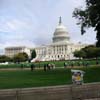 photo * book |
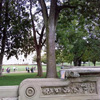 photo * book |
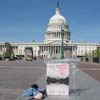 photo * book |
You can choose to tour the Capitol building for free and learn more about its history and significance. Just sign up for the choice on our 2011 BookCrossing Convention add-ons page. If you are from the United States and want to meet with your Senators or Representatives, you should call ahead to their offices. To keep our lawmakers and the public safe, there are a number of items now prohibited, including backpacks and luggage. Familiarize yourself with the full list. Unable to fit the Capitol into your plans while in Washington, D.C.? You can take a virtual tour of it online any time.
Adventures at the Book Buffets
This post is part 13 of our Wednesday Adventure Series. Each week we will highlight something different in the Washington, D.C., Metro Area, many of which will be options for part of your own BookCrossing Journey. With so many things to see and do, how will you choose?
REMINDER: There is still time to send us books or other items for the convention!
BCinDC already has hundreds of books collected for the 2011 BookCrossing Convention book buffets. Yes, you read that right: book buffets plural! In fact, we will have 5 different book buffets at the convention.
#1: The Main Book Buffet
There will be a main book buffet where you can leave, browse, and take books. This will be stocked with books of all shapes and sizes that may interest convention attendees. This book buffet will be in a publicly accessible area 24 hours a day during the convention and can be used by all convention attendees as well as other hotel guests, visitors and staff.
#2: BookCrossers Only – Please Don’t Wild Release Immediately
For books that you want someone to enjoy before it launches into the wild. Leave a book on this table if you want a BookCrosser to enjoy it before it continues its travels. Looking for a good read? This will be a great buffet to search for books especially recommended by other BookCrossers.
 |
#5: Conventions Past and FutureHere you will find books about or set in all the locations of BookCrossing Conventions and UnConventions, including Dublin in 2012 and the locations that are bidding for 2013! For a full list of locations, please see the excellent list put together by the Boston 2010 UnConvention Team. |
Release Notes
We suggest you use the following when wild releasing books to any of the convention book buffets:
Country: USA
State / Province: Virginia
City: Mail or by hand-rings, RABCK, meetings, etc.
Crossing Zone: 2011 BookCrossing Convention
Sending Us Books
If you cannot attend the convention, maybe you would like your books to join in on the fun. Or maybe you’ll be attending but can’t afford to bring all your books with you in your suitcase. You can send books to us for the book buffets:
BCinDC c/o Kate McDevitt
P.O. Box 343
Fairfax Station, VA 22039
USA
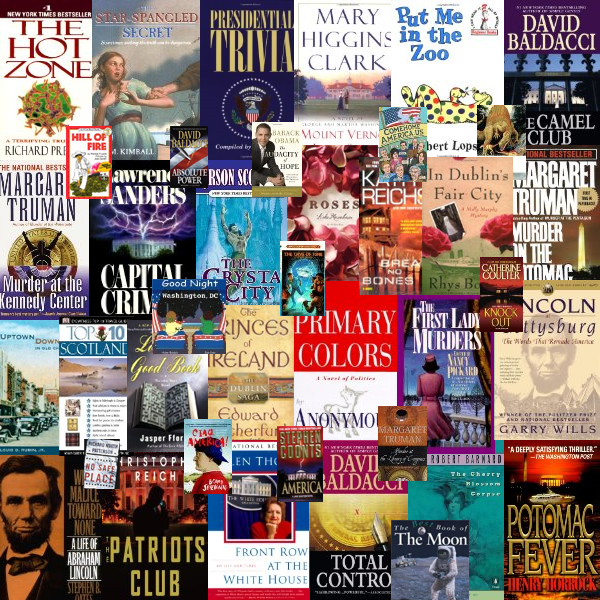
Adventures in Crystal City
This post is part 12 of our Wednesday Adventure Series. Each week we will highlight something different in the Washington, D.C., Metro Area, many of which will be options for part of your own BookCrossing Journey. With so many things to see and do, how will you choose?
REMINDER: There are fewer than 100 days until the 10th Anniversary BookCrossing Convention. Have you registered yet?
Crystal City is a neighborhood within Arlington, Virginia, just 2 Metro stops from Washington, D.C., and in April it will become the central location for the 2011 BookCrossing Convention!
The Sheraton Crystal City hotel is our main venue, so we thought you might like to get to know it a little bit better before you arrive. The hotel has:
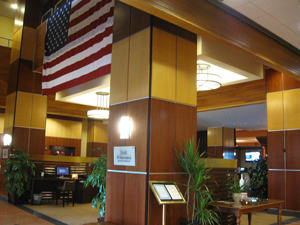
- guest rooms, all updated in 2008
- an in-house restaurant, 18 Eads Bistro
- a fitness facility and sauna for guests
- an ATM
- a gift shop
- luggage storage
- a lounge for SPG club members
- a 24-hour front desk staffed by courteous employees
The features BookCrossers might be most interested in, however, include:
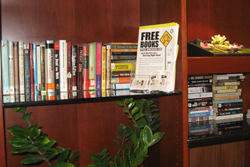
- free wireless high speed internet access in the lobby, guest rooms, and convention areas (a special deal for our convention)
- a business center in the lobby with computers & printers you can use (for a fee)
- an in-house bar, 18 Eads Lounge
- free airport shuttle leaving every 30 minutes from 6am to 11pm (see our getting there page for more info)
- newly renovated (finished January 2011) meetings rooms
- an OBCZ bookshelf beside the check-in desk
BookCrossers will take over much of the second floor of the Sheraton during our convention. You’ll want to head up to the second floor (by way of stairs or elevators) to check in for registration. The beautiful second floor atrium is where we’ll have our main book buffet and the large room behind it will be where all our big events take place, including the exciting kickoff reception with snacks Friday evening, the banquet dinner with speakers and quiz night on Saturday, and the breakfasts on Saturday and Sunday mornings. Some of our smaller activities and four other book buffets will be in the smaller meeting rooms also on the second floor.
The hotel is conveniently located right across the street from the Crystal City Metro station (Metro train and bus service), down the street from the Crystal City VRE train station, and just 5 minutes away from the airport by car (or shuttle). There is limited metered street parking outside the hotel (free only on weekends) and there is a parking garage at the Crystal City Shops (free after 4pm on week days and all day on weekends). Catty-corner from the main entrance to the Sheraton is a post office, convenient for mailing books home to yourself (or friends and family) if they won’t all fit in your luggage.
There are still rooms available at the Sheraton during the convention dates, at a special discounted rate of $99 a night. The Sheraton hotel parking garage is only $15 for BookCrossing convention attendees (see the hotel page for more information).
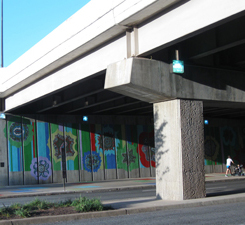 The area around the Sheraton is worth a look as well. At first glance, it looks like a typical “urban village†with high-rises, hotels, apartment complexes, and office buildings everywhere. But there’s actually more to Crystal City than that. A 2008 project entitled “Art Walls†turned a few of the neighborhood’s buildings, walls, and streets into canvases. There are nine small gardens/parks nearby as well. Our favorite is “The Water Park,†a lovely area just beside the VRE station where there are trees, benches, a small café, and a 1-story high water fountain. While you’re walking around, looking at the art and parks, be on the lookout for free “Crystal Wi-Fi†signals, available in most of the popular park areas. You could release a book there and use your laptop or mobile device to make release notes in real-time!
The area around the Sheraton is worth a look as well. At first glance, it looks like a typical “urban village†with high-rises, hotels, apartment complexes, and office buildings everywhere. But there’s actually more to Crystal City than that. A 2008 project entitled “Art Walls†turned a few of the neighborhood’s buildings, walls, and streets into canvases. There are nine small gardens/parks nearby as well. Our favorite is “The Water Park,†a lovely area just beside the VRE station where there are trees, benches, a small café, and a 1-story high water fountain. While you’re walking around, looking at the art and parks, be on the lookout for free “Crystal Wi-Fi†signals, available in most of the popular park areas. You could release a book there and use your laptop or mobile device to make release notes in real-time!
In addition to all the beauty of the neighborhood outside, there are some indoor shopping opportunities as well. The Crystal City Shops are just across the street from the Sheraton, connected to the Metro station underground. There are more than 100 stores, shops, and eateries there. Whether you’re hunting for a good cup of coffee or looking for souvenirs, sitting down for dinner or popping in to the convenient store for an item you forgot to pack, you’ll find it there. If you like art, you won’t want to miss the 2010 FotoWeek award winning photographs on display in the interior concourse from the Metro station to Au Bon Pain. On the Friday of the convention we’ll be having dinner on Friday at some of the restaurants here and down the street from the Sheraton.
You can choose to check out Crystal City on your own throughout the weekend. And you can choose to join us on the early morning release walk around Crystal City before breakfast on the Sunday of our convention.






